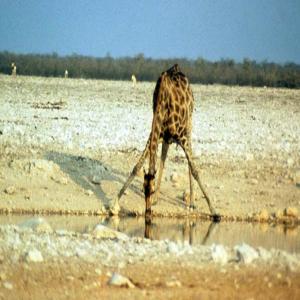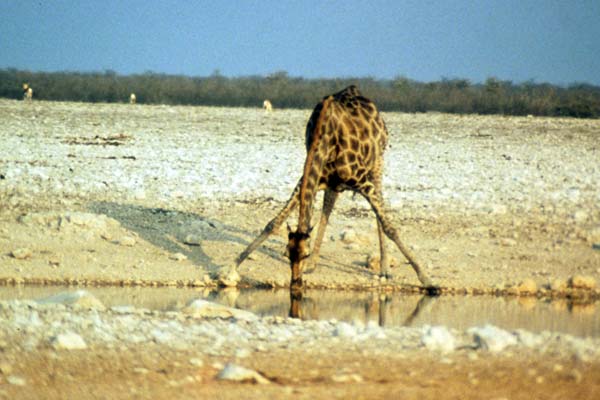Episodes

Monday Jun 27, 2011
The WildLife: Howler Monkeys, Robin Brockett
Monday Jun 27, 2011
Monday Jun 27, 2011
Robin Brockett, former director of the Wildlife Care Center in Belize, talks about howler monkeys in Belize. She tells “The WildLife” host Laurel Neme how her research into their diet and habits has helped her with rehabilitate howler monkeys captured as pets for release back into the wild.
Howler monkeys are the loudest land animal in the world. They’re known for their loud, guttural, barking howls, which can be heard over three miles away. But did you know that they smell like steeped black tea? Or that they are picky eaters? While howler monkeys in Belize will eat 75 different species of leaves, they’re very particular about the age of the leaves. There are only a few types of leaves they’ll eat year-round. For example, (ficus) fig leaves appear the same all year long but sometimes the howlers will avoid it. That’s because these leaves have a high latex content, and at some point it becomes less palatable and less digestible.
Robin Brockett spent 16 years in Belize first researching howler monkeys in the wild and then spearheading the rehabilitation of confiscated pets back into the wild. Her work led to establishment of the Wildlife Care Center of Belize in 1999, where she served as director for over a decade. Over that time, Robin has nursed and released over 30 howler monkeys back into the wild. Before moving to Belize, Robin Brockett was a primate keeper at Zoo Atlanta for three years where she became involved in behavioral research. Prior to that, Robin spent three years at the Bronx Zoo in both the bird and mammal departments and also time in zookeeper positions at the Franklin Park Children's Zoo and the New England Science Center. She’s currently Assistant Bird Curator with the Audubon Zoo in New Orleans. She still works with the Belize government on issues related to the pet trade. This episode of “The WildLife” aired on The Radiator, WOMM-LP, 105.9 FM in Burlington, Vermont on June 27, 2011.

Monday Jun 14, 2010
The WildLife: Dung Beetle Adventures, Part II, Doug Emlen
Monday Jun 14, 2010
Monday Jun 14, 2010
Doug Emlen, a University of Montana biology professor, discusses his research into the developmental and evolutionary biology of dung beetles in the second part of his two-part interview. He tells “The WildLife” host Laurel Neme about his many adventures doing research--from being charged by cape buffalo as he picks through dung on the plains of Africa to the strange looks airline security gives him when he comes back from his travels to far-flung places with his carry-ons filled with dung beetles. He also talks about how he learned to smell howler monkeys so that he could locate their first dung of the morning – and thus find the dung beetles that were the real object of his desire. The interview also includes a discussion on predatory strategies related to dung. While most predators don’t use dung to find their prey, because by the time they find the dung the animals would be long gone, some animals, like sloths and koalas, move so slow that they use a different strategy of burying their dung so that predators can’t find them from the smell. You’ll find out how some specialized dung beetles have adapted and hang onto the backs of the animals until the opportune moment when they drop down to be buried with their prize. Dr. Emlen was always interested in animal armament and became even more interested after studying a species of dung beetle in Panama that specialized in howler monkey scat. Since then, he broadened his research to dung beetles all over the world and has noticed interesting patterns in their weaponry. Now, he’s focusing his research on the evolutionary forces that make animal weapons, from dung beetle horns to elk antlers to rhino horns, so diverse. This episode of “The WildLife” aired on The Radiator, WOMM-LP, 105.9 FM in Burlington, Vermont on June 14, 2010.

Monday Jun 07, 2010
The WildLife: Dung Beetles & Weaponry, Part I, Doug Emlen
Monday Jun 07, 2010
Monday Jun 07, 2010
Doug Emlen, a University of Montana biology professor, reveals the strange and endearing characteristics of dung beetles. In this first part of a two-part interview, Dr. Emlen tells “The WildLife” host Laurel Neme about the biology of dung beetles and what the diverse sizes and shapes of dung beetle horns and armaments reveals about their lifestyle. Doug Emlen is a professor of biology at the University of Montana and an expert on the evolution and development of bizarre and extreme shapes in insects. While he initially resisted the idea of studying dung beetles, a failure doing fieldwork for his PhD forced him to change his tune. Now, he’s a dung beetle aficionado – and you may be too after listening to the fascinating life of this strange group of creatures. Dr. Emlen was always interested in animal armament and became even more interested after studying a species of dung beetle in Panama that specialized in howler monkey scat. Since then, he broadened his research to dung beetles all over the world and has noticed interesting patterns in their weaponry. Now, he’s focusing his research on the evolutionary forces that make animal weapons, from dung beetle horns to elk antlers to rhino horns, so diverse. This episode of “The WildLife” aired on The Radiator, WOMM-LP, 105.9 FM in Burlington, Vermont on June 7, 2010.

